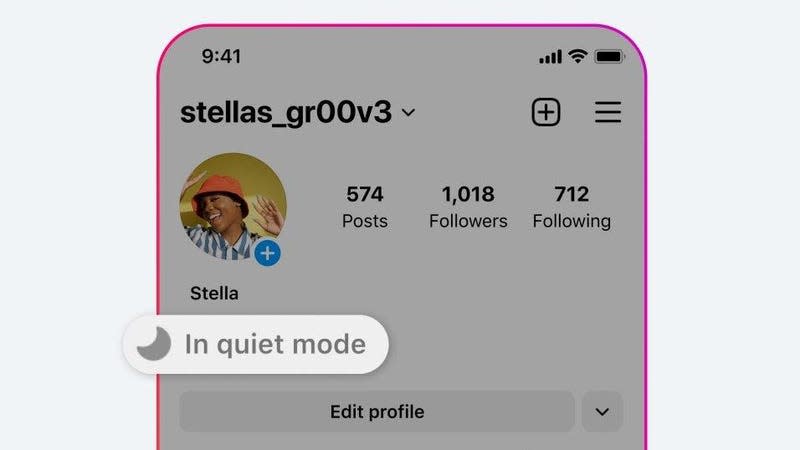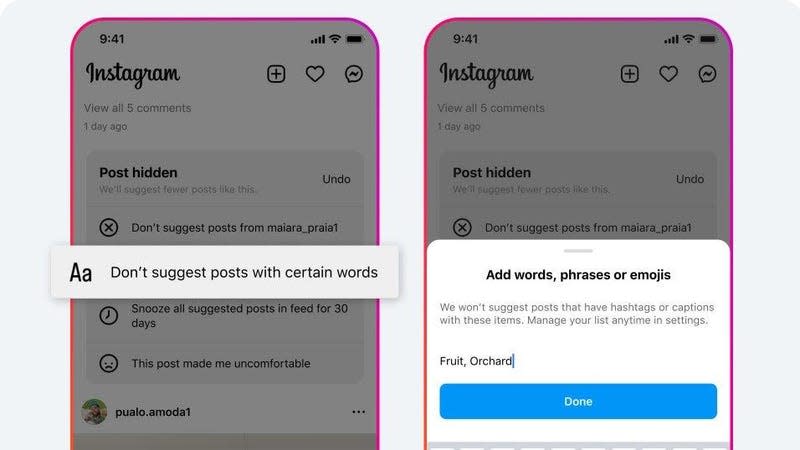Instagram’s Quiet Mode Lets Users Politely Tell Their Followers to Shut the Hell Up

Instagram launched a new “Quiet Mode” this week to help users spend less time on the company’s totally, absolutely not addictive platform.Though any user can use the new features, Meta’s launching them partly with teens in mind in what marks the company’s latest attempt to recover from a string of reports and leaked documents allegedly linking its product to teens harm.
Users who choose to turn on Quiet Mode won’t receive notifications until they turn the setting off. Friends and other users trying to reach out to someone with the setting on will themselves receive an auto-reply telling them quiet mode was activated. Presumably this automated script could prevent people from feeling like they’re being ghosted when someone suddenly switches off their notifications. An icon will also appear alongside a user’s profile’s activity to let others know they have Quiet Mode engaged. Users will receive a summary of any notifications they may have missed when they turn the mode off and are ready to leap back into their doom scrolls.
Read more
Meta says it will prompt teen users to turn on Quiet mode after they’ve spent a “specific amount of time” on the app late at night. Meta declined to answer our inquiry into what time of night that would occur. That brief point might initially sound like a major win for tech critics and health advocates who’ve warned about the potential harmful effects of prolonged screen time, but, in reality, actually says little. For starters, Meta doesn’t specify how long users will have to spend on the platform before receiving the notification, nor does it say what time of night the prompt may occur or, for that matter, why the notification wouldn’t just tell users to turn off Instagram altogether.
“Teens have told us they’re looking for more ways to focus while studying, during school and at night,” Meta President of Global Affairs Nick Clegg said in a statement.

A growing body of academic research in recent years has demonstrated convincing links between increased screen time and decreased cognitive ability. Other research shows links between increased screen time and enhanced symptoms of depression, particularly amongst young adults. Meta’s own internal research, made public by whistleblower Frances Haugen in the Facebook Papers, shows the company knew teens were blaming Instagram for increases in the rate of anxiety and depression.
🚨🚨COUNTERVAILING NARRATIVE ALERT!🚨🚨https://t.co/b9Q1zQG5Xm
— Andy Stone (@andymstone) January 18, 2023
Meta, and a not insignificant portion of social scientists, it should be noted, disagree with many of those findings, and say it’s too simple to blame a reported uptick on teen depression on social media alone. Executives and spokespeople at Meta are also eager to point out any and all research counteracting the screen time narrative such a report released this week from the Amsterdam’s School of Communication Research. That said, numerous states, including California, have attempted to push forward legislation seeking to specifically target so-called screen addition.
Outside of tools specifically targeting teens, Instagram says it will also now let users choose words, or lists of words, hashtags or emojis they wish to avoid seeing in recommended content, presumably to cut down on users’ interaction with posts they personally find harmful or unpleasant. Instagram released a similar feature last year which lets users hide DMs or comments containing certain selected words.

More from Gizmodo
Sign up for Gizmodo's Newsletter. For the latest news, Facebook, Twitter and Instagram.

